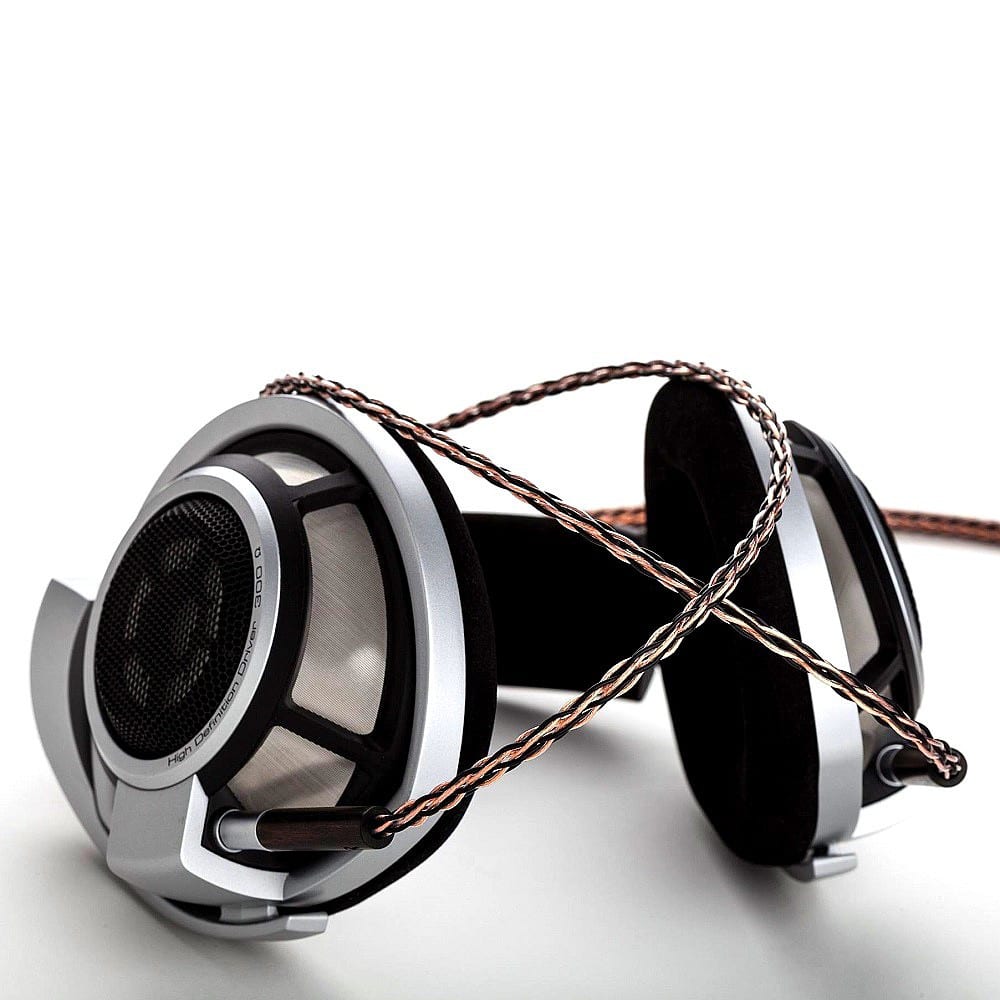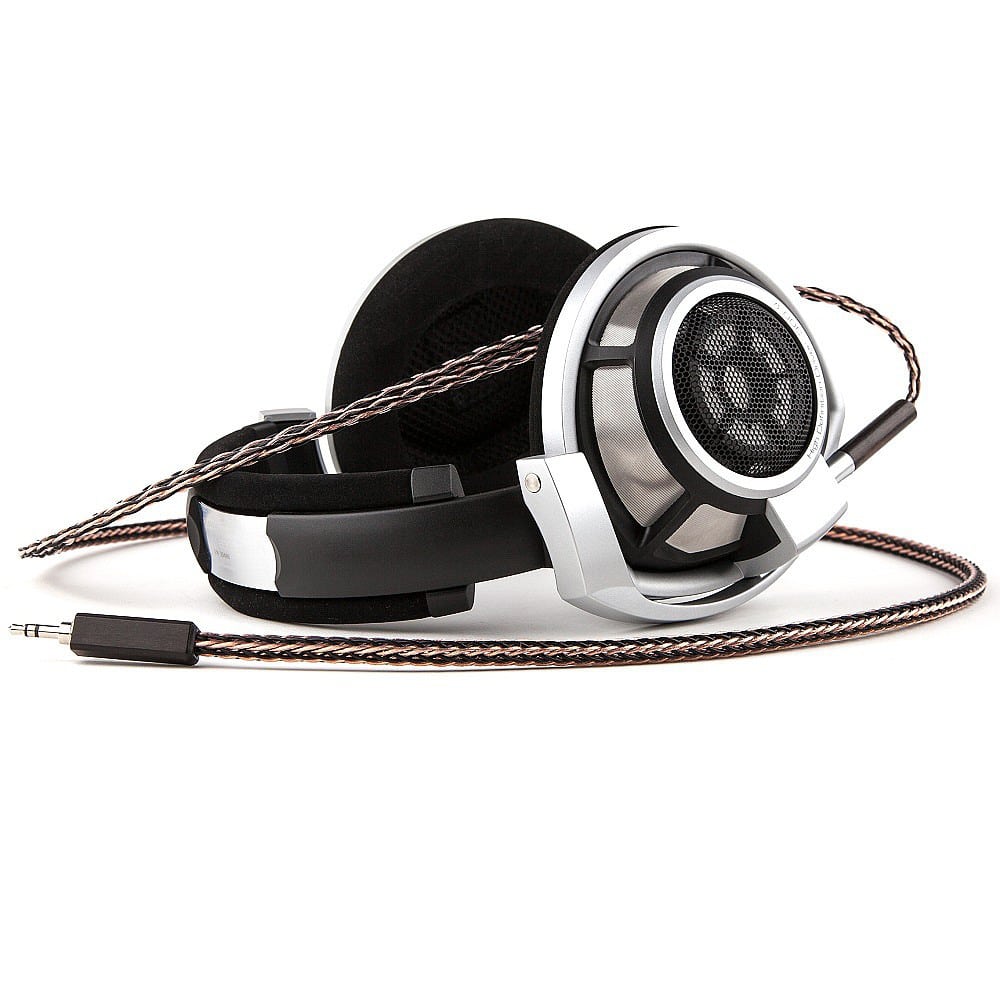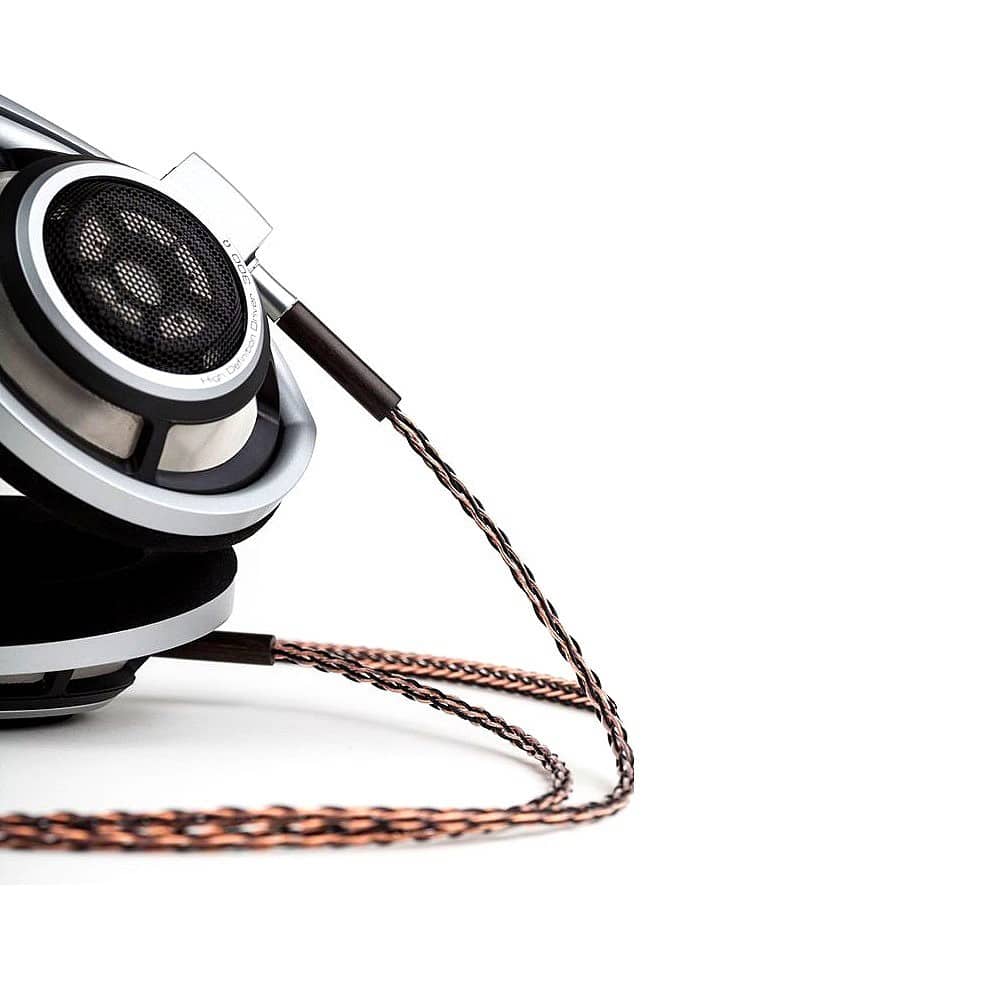The Article
Kimber AXIOS headphone cable with wooden accents
18th April 2016

Looking to squeeze the maximum amount of sound quality from your headphones? A third party cable might just be the answer. Paul Rigby reviews Kimber’s AXIOS headphone cable
The problem with headphones, even pretty expensive headphones, is that they tend to feature advanced technologies and delightful design but then they seem to run a blank when if comes to connecting the things to your carefully considered hi-fi because the cable, in many cases, is too closely related to the thing that boils your kettle.
What is the point in spending hundreds if not thousands on a pair of headphones if you then lose a fair percentage of that sound quality down the bit of metal string the company calls a cable?
There is an answer to this situation and it is being supplied by a range of third party cable companies out there. Kimber is one of the more well known brand names out there.
Created using a new development of the Kimber woven cable design, the AXIOS features 16 individually insulated 24-gauge strands of OFHC (oxygen-free high thermal conductivity) copper that divides the 16 strands into eight at the point where it splits into right and left channels. There are no soldered joints or twisted wires while the Kimber weave exists throughout the length of the cable.
With this cable, you’ll notice that the connectors feature hand-polished wooden accents. For example, the Audeze LCD3 cable features a Zebrawood connector, the Sennheiser HD800 is Gaboon Ebony and the HiFi Man is fitted with Mahogany. Each AXIOS cable is hand-made and bespoke, being made to order for the individual customer based on his or her own set of headphones. The length of the cable can be specified, in addition to the connection at the amplifier end: 3.5mm or 6.3mm jack or 3 pin/4 pin XLR.
Most cables will be specified in a single-Y format to connect an unbalanced headphone amplifier to a pair of headphones but can also be manufactured with a double-Y format for connecting balanced headphone amps to headphones. A single stereo connector to stereo jack (or XLR) configuration may also be specified.
SOUND QUALITY
I begun the sound test playing the CD version of Bing Crosby’s Bing on Broadway and the classic track, Swanee. This song provides two things, firstly the baritone warmth and textural delivery of Crosby himself but also the small jazz group headed by the piano of Buddy Cole.
What I heard from the AXIOS compared to the standard cable was a much greater insight in terms of the detail that was now being expressed and revealed. Hence, Crosby’s voice lost that earlier smearing and blurring that added a bright edge to his delivery from the original cable. Now, the AXIOS gave Crosby a solidity and a rich tone that added confidence to his performance and swept over the ear like chocolate. Fans of Crosby will know exactly what I mean by that.
The most startling aspect of the Buddy Cole backing was that I could now properly hear the subtle backing guitar. There were plenty of times, with the standard cable, when you could have convinced me that no guitar was actually playing on this track. The AXIOS brought out the performance successfully, catching the rhythmic strumming without too much effort. More than that, what sounded like a harp effect at the beginning of the track now seemed to be Cole reaching into the piano and strumming the piano strings to achieve the effect which gave the track an added fragility. His piano now had new vigour and energy with, again, a lack of damaging smearing that enhanced the tonal truth of this instrument. Bass, meanwhile, was heavy with a mass that announced its presence, as opposed to the original, rather insipid, delivery of the double bass from the original cable. With the AXIOS, bass had a heft that planted the foundation of the song firmly to the floor of the soundstage.
I then moved to Ragged Glory, the Neil Young vinyl LP backed by Crazy Horse which saw Young let loose on his electric guitar.
What first attracted my attention, though, was the percussion. There was a noticeable separation between the strike of the drum and the reverb which followed soon after. This separation did give the percussion a more mature and complex sound, though. Also changed was the Young vocal which was darker in aspect, standing alone, apart from the instruments which added nuance to his delivery. Alongside Young was the Crazy Horse harmony vocals which added a contrasting, rather light, but airy and spacious performance that gave the song a free and light air. The guitars, finally, had a powerful, dirty, grungy sound that never lost detail and, in fact, added a certain richness in reverb while keeping overall control.
CONCLUSION
I loved the AXIOS, in terms of the basic sound improvements it offered. Sonically, it improved the HD800s and actually corrected some long-standing flaws.
Unlike many hi-fi users on the Internet, I don’t break out in a cold sweat when faced with the prospect of an expensive cable. I have many of them in my hi-fi and I understand how important they are. I’ve done enough sound tests on a wide range of equipment over the years to appreciate that the better designed examples can add untold benefits to a typical hi-fi system. To be frank, I’d plug a Teflon-coated cheese sandwich into my hi-fi and pay good money for it if I could hear genuine sonic improvements because of it. All I care about is better quality sound so that I can grab more from my music. And music is what this is all about.
I do have an issue about the price of the AXIOS in terms of what it is and its target market, though.
Why? Well, we have to remember that headphones are semi-autonomous pieces of technology. They do not exclusively sit within the bounds of a hi-fi system. They can, sure, but their potential use is far wider than that. Let’s take the reference HD800s I have here. I use them for my reference system and as part of a second, ’mobile’, system that I use in and around the house and, thirdly, in a second hi-fi system and, fourthly, as part of my near-field, Mac-based computer system. They are all over the place. Headphones are unique in this matter and, as such, should be considered as self-contained hi-fi ancillaries with their own price point requirements.
If this Kimber cable was an interconnect, then I would have no issue with the price, assuming that it was targeted at a high-end system that, in itself, was tagged with a large overall price point. What you are looking at here, though, is a single cable that is priced at around 70% of the entire hardware that it is supporting. Even that is not exactly the major issue because I’m aware that cables can offer incredible improvements in sound quality that can sometimes justify that figure. The AXIOS, though, does not. The AXIOS doesn’t ‘transform’ the sound of the HD800s, it merely offers ‘excellent’ sound improvements. There’s a difference.
Hence, if I have to spend nearly £700 on a cable for these sonic improvements on this £1k set of headphones then, to be frank, I’d be looking to save that cash and buy a more expensive and better performing pair of headphones instead.
And if Kimber cry foul and declare that this is the only way that the AXIOS can be built, using this type of build process, utilising the current economic structure? Then I say that Kimber should have realised all of this from the off, stepped away from the project, trashed the idea and should have invested in some other cable type.
This is a excellent cable, in sonic terms: but not almost £700 brilliant. Maybe £300? Yes.
As it stands, in purely sonic terms, the Kimber Axios allowed my HD800s to open up and really express themselves for the first time. To such an extent that you feel that the default cables were really holding back, masking important detail and, well, mumbling a lot. The Kimber AXIOS provided a sense of truth, giving each instrument a a tonal accuracy and a musicality that engaged and entertained. The HD800s do, on occasion, suffer from adverse criticism in terms of their forward, slightly hard nature but this cable adds an essential ingredient to the sonic recipe. Despite the price (and that remains an issue with me), any HD800 owner should demo this cab
KIMBER AXIOS HEADPHONE CABLE
Price: £684 [for 1.2m]
Website: www.russandrews.com
Tel: 01539 797300
Good: spacious midrange, instrumental separation, incisive detail, meaty bass
Bad: price, price, price!




